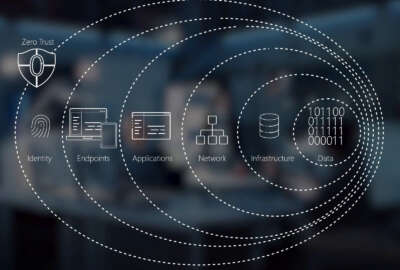The Army’s success in moving to enterprise email in the cloud has opened the door much wider for the acceptance and use of similar shared services.
In his 35 years in government, Mike Krieger, who recently retired as the deputy Army chief information officer/G6, said email-as-a-service transformed the culture of the service.
“Now you’ve got people that three years ago would have said ‘it’s not the right thing.’ Now people say, ‘it’s really working and let’s do other things in the same way,'” Krieger said in an interview before he retired Oct. 31. “What I’m very proud of is the culture has changed a little bit. People have seen that some IT services ought to be managed from the enterprise and some ought to be local, and now they are looking for more things that ought to be managed by the enterprise and made very simple — just like the electricity that you can consume from the wall. I’m very pleased to have seen that change.”
The Army completed the move of 1.43 million users to enterprise email provided by the Defense Information Service Agency in August 2013.
Krieger said enterprise email sets the path for civilians and soldiers to take advantage of a series of new technologies over the next 3-to-5 years, including mobility, the cloud and unified communications.
The Army plans to issue a request for proposal for unified communications in 2015 with award and implementation in 2016.
“What [email] did for the Army was removed all the exchange servers. We cleaned up the network so we can now consume services from the cloud. That was huge for both the Army and for DISA,” Krieger said. “Now that we can consume services from the cloud, we’ve got a clean network, we’ve added capacity and are adding Joint Regional Security Stacks (JRSS), I absolutely believe industry can probably respond faster and go quicker so we want to make sure in the RFP we give them the opportunity to compete from government clouds at least in continental United States in addition to maybe partnering with DISA and using government data facilities.”
Unified communications includes presence, awareness, chat, voice, video and desktop sharing.
“When that happens, that is dramatic change. Now with my iPad, away from work, I have a soft telephone or soft video. When I show up for work, I think that replaces my telephone. You put it in the fake telephone and in airplane mode and you have two apps — UC and your phone,” Krieger said. “So what you see is ISDN video is going away. It’s going to be replaced by UC-IP video. Defense Connect Online goes away, replaced by UC. And you have additional capabilities that you don’t have now. So if you take that 4.3 million user global address list for email and now it’s your global address list for UC, you really have the ability to reach out and chat, you can talk, do a video or share your desktop with that, I think that’s huge. What I see in the next 24 months, as you deliver UC as a service from a commercial cloud or from a DISA cloud — we will give industry the opportunity to decide what makes sense and how to compete for it — I think you will see the ability for the business of the Army to change the way it does business and be more effective and drive cost down. I think the next three years for the Army, for DoD and the federal government is going to be UC.”
He said mobility will become the end state through the use of mini-pads and the traditional desktop will go away.
A key piece of that effort is the joint regional security stacks (JRSS). The Army initiated its first implementation with the Air Force at Joint Base San Antonio earlier this year.
Under the JRSS construct, the Army, the Air Force and, eventually, the Navy will hand off most of their base-level cybersecurity functions to 11 regional, jointly- operated facilities. Along with the security change, the Army and Air Force are upgrading their network infrastructure at San Antonio with new technologies, including multiprotocol label switching routers (MPLS). It has more than doubled the base’s network capacity.
Krieger said getting the JRSS and network capacity expansion in place is the main reason he continued his career with the Army over the last few years.
“We were all doing the same thing so nobody argued that doing the JRSS was bad, it was just that we were doing it by military department agency. There was a Navy/Marine Corp architecture, an Air Force architecture and an Army architecture,” he said. “I think what everybody finally realized, particularly with the budget constraints, was that it is more effective to have a single one-DoD, it is more secure and it is cheaper. I think that realization finally came.”
Krieger said the Navy has been participating in the JRSS quarterly meeting, but the most recent discussion got them over the hump. The Navy and Marine Corps are looking at joining the JRSS in 2017.
RELATED STORIES:
Enterprise email forcing broader changes for the Army
Army, Air Force reach first milestone in shared cybersecurity system
Navy, Marine Corps to migrate to joint DoD cybersecurity architecture, but not until 2017
Copyright
© 2024 Federal News Network. All rights reserved. This website is not intended for users located within the European Economic Area.






